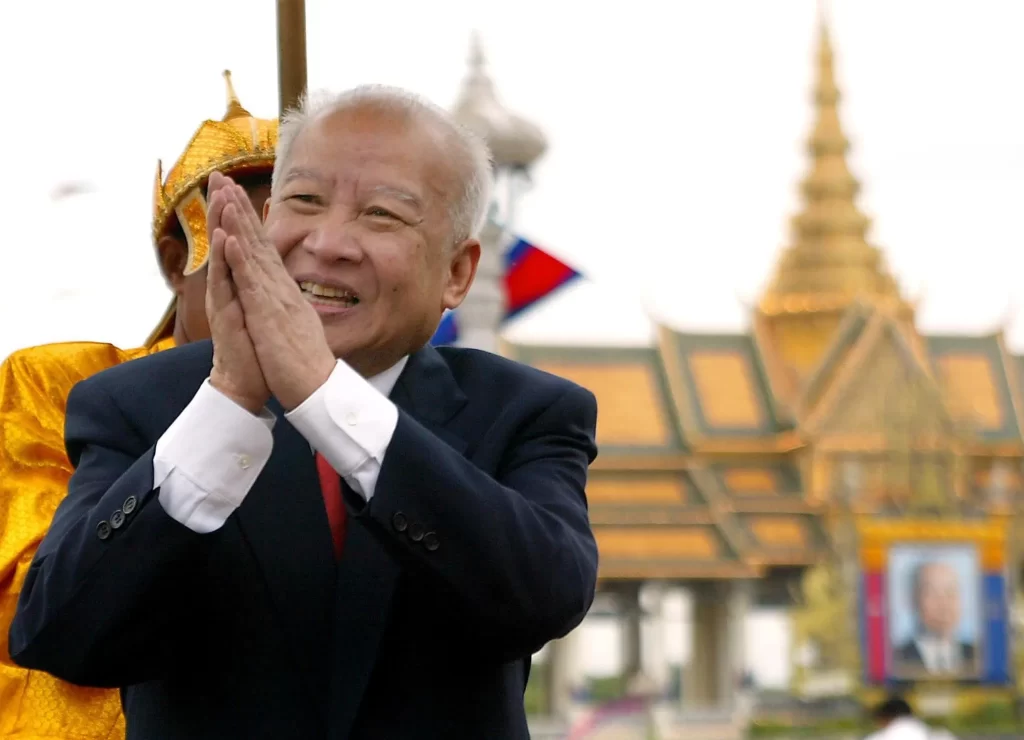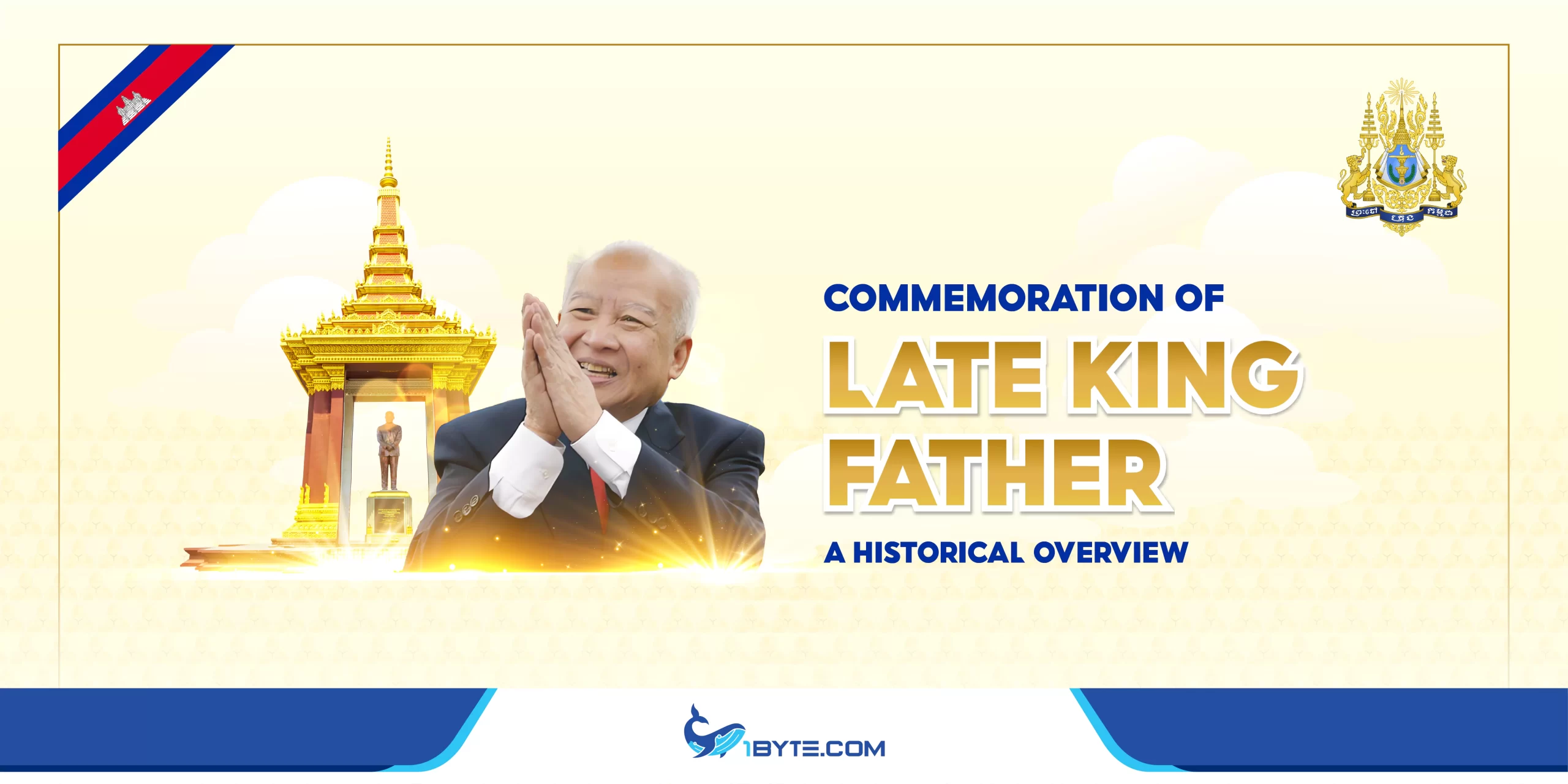Commemorating the late King Father is a deeply significant event in Cambodia. The annual ceremony pays tribute to King Norodom Sihanouk’s lasting legacy. His vision and leadership have shaped modern Cambodia. Journey with us at 1Byte through a historical overview of this special day.
Historical Background
The Commemoration of Late King Father is a significant public holiday in Cambodia. It honors the late King Norodom Sihanouk, who passed away on October 15, 2012. This day is observed annually on October 15th.
Norodom Sihanouk was born on October 31, 1922. He became King of Cambodia on April 25, 1941, and reigned until March 3, 1955. After a period of exile, he returned to power in 1993 and continued to reign until his abdication in 2004.

The holiday was established to pay tribute to his contributions to Cambodia. People celebrate with various events and ceremonies across the country. For more details, you can refer to the Cambodia Embassy UK.
Overview of the Late King Father’s reign and impact
Norodom Sihanouk, known as the King Father, played a crucial role in Cambodia’s history. He led the country to independence from France in 1953. His reign saw significant political and social changes.
Under his leadership, Cambodia experienced economic growth and modernization. He promoted arts and culture, leaving a lasting legacy. Sihanouk’s efforts in the 1980s helped achieve peace amidst political turmoil.
For more details, you can refer to the Britannica article on Norodom Sihanouk.
The Tradition of Commemoration
By engaging in traditions of commemoration, communities strengthen their connection to history. They also pass down values and stories to younger generations. This ensures that the legacy of the Late King Father remains vibrant and influential for years to come.
Origins and evolution of the commemoration practice
The Commemoration of Late King Father Norodom Sihanouk has deep roots in Cambodian culture. This practice began shortly after his death on October 15, 2012. The government declared this day a public holiday to honor his contributions to Cambodia’s independence and unity.

Over the years, the commemoration has evolved. Initially, it involved simple ceremonies and tributes. However, as time passed, the events became more elaborate. In 2013, the anniversary saw the unveiling of a new statue of King Father Norodom Sihanouk in Phnom Penh. This statue, standing 4.5 meters tall, was erected under a 27-meter high stupa in the park east of the Independence Monument.
The practice now includes various activities such as parades, cultural performances, and educational programs. These events aim to remind the younger generation of the late king’s legacy and his role in shaping modern Cambodia.
Leverage 1Byte’s strong cloud computing expertise to boost your business in a big way
1Byte provides complete domain registration services that include dedicated support staff, educated customer care, reasonable costs, as well as a domain price search tool.
Elevate your online security with 1Byte's SSL Service. Unparalleled protection, seamless integration, and peace of mind for your digital journey.
No matter the cloud server package you pick, you can rely on 1Byte for dependability, privacy, security, and a stress-free experience that is essential for successful businesses.
Choosing us as your shared hosting provider allows you to get excellent value for your money while enjoying the same level of quality and functionality as more expensive options.
Through highly flexible programs, 1Byte's cutting-edge cloud hosting gives great solutions to small and medium-sized businesses faster, more securely, and at reduced costs.
Stay ahead of the competition with 1Byte's innovative WordPress hosting services. Our feature-rich plans and unmatched reliability ensure your website stands out and delivers an unforgettable user experience.
As an official AWS Partner, one of our primary responsibilities is to assist businesses in modernizing their operations and make the most of their journeys to the cloud with AWS.
Role of the public in the commemoration
The public plays a crucial role in the Commemoration of Late King Father Norodom Sihanouk. Every year on October 15th, Cambodians come together to honor the late king’s legacy. This day is marked by various activities, including hoisting national flags at homes and holding religious ceremonies at pagodas.
In Phnom Penh, people visit the Norodom Sihanouk Memorial, a bronze statue of the late king, to pay their respects. Since its inauguration, it has become a focal point for public gatherings on this day.
Moreover, the public’s involvement extends beyond mere observation. Schools and communities organize events to educate younger generations about King Father’s contributions to Cambodia. This ensures that his legacy continues to inspire future leaders.

